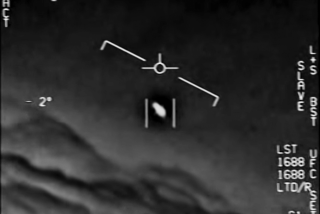Thank the Heavens for a Scientist Named Carl Sagan
- Share via
Three remarkable events lined up simultaneously last week, a human version of the phenomenon that astronomers call syzygy.
On the same day the Hubble space telescope was being repaired by astronauts, Americans were enthralled by a TV movie about a collision between Earth and an asteroid--and friends and admirers of the late Carl Sagan gathered in Pasadena for a commemoration, a hail and farewell, to a stellar human being.
On second thought, perhaps it isn’t so much syzygy as it is a triangle. At one
corner of the base is what is becoming the commonplace: roadside repair service in space. At another, the preposterous physics of science according to Hollywood. And at the apex, Sagan, who would have been bemused by both.
For 25 years Sagan occupied our higher consciousness, a humane Prometheus who brought the fire of knowledge down from its heights. He made the sciences less frightening, less hieratic.
His writing, his words and his wonderment were the lantern that he held before us to light the path into the starlit universe. His name came to be associated with the grandest of human ventures: Pathfinder, Mariner, Viking.
The message he created for the Voyager expedition told the universe who we are and what we want it to think of us. Sagan thought a great deal about the likelihood of something else out there, and in doing so, he elevated the quest for extraterrestrial intelligence out of the comic books and into the scientific journals.
A thousand people came to the commemoration; 10,000 have written to his family since his death. Millions more--yes, maybe billions--know his work.
We know him from TV, on Johnny Carson, on PBS, where I met him, and on his last appearance, on “Nightline” just before he died Dec. 20. It was his last shot, his wife said--and she couldn’t help laughing at the memory. His message was the same: “We live on a tiny planet in a universe vast beyond imagining.”
Pasadena was Sagan’s second home--JPL, Caltech, the Planetary Society. Recently there was Hollywood and a film of “Contact,” a novel he wrote with his wife, Ann Druyan. The star, Jodie Foster, came to the Pasadena Civic. So did Buzz Aldrin and Frank Drake, Sagan’s colleague in the search for extraterrestrial intelligence.
It was Drake who read to us an observation from an earlier visionary named H.G. Wells:
“The day will come, one day in the unending succession of days, when beings who are now latent in our thoughts and hidden in our loins shall stand upon this earth as one stands upon a footstool and shall laugh and reach out their hands amid the stars.”
That was 1902. I would go back earlier to borrow from Shakespeare, to say of Carl Sagan:
“And when he shall die, take him and cut him out in little stars, and he will make the face of heaven so fine that all the world will be in love with night and pay no worship to the garish sun.”







